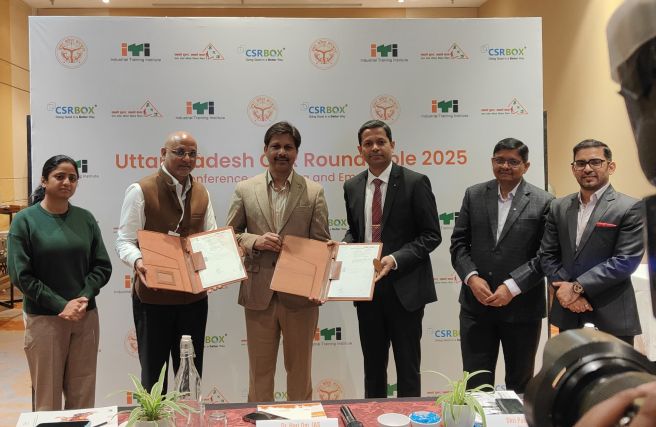
A pioneering global study has revealed how schools worldwide are using a raft of marketing techniques to attract higher performing pupils and climb the league tables.
The research, published on Feb 16 and led by the University of Bristol, shows how the increasing trend of parents being able to choose which primary and secondary school their child goes to has resulted in greater rivalry, driving an industry of marketing activity in both public and paid-for schools, sometimes at the expense of improvements to education.
A team of marketing, policy and economics experts set to analysing all the published evidence available. This involved reviewing dozens of research papers about the marketing practices of primary and secondary schools, studying data from 16 countries, including the UK, America, Canada, Australia, and Taiwan.
The findings uncovered a prevalence of concerning practices, such as targeting certain households to boost academic performance and using misleading imagery in promotional materials. Marketing through the careful management of information presented to parents is being used as a quicker more cost-effective substitute for real academic and operational changes. There were also instances of pupil recruitment taking priority over the quality of teaching in the US and Australia, where teachers were actively involved in community outreach events, canvassing and social media campaigns.
The report therefore calls for further research into the nature and impact of school marketing combined with much-needed regulatory reform to ensure such methods support equitable access to better education.
Corresponding author Agnes Nairn, Professor of Marketing at the University of Bristol Business School and Pro Vice-Chancellor for Global Engagement, said: “The full extent of school marketing and what forms it takes has largely fallen under the radar . This is the first-ever systematic review of all studies and the findings are rather worrying.
“Instead of raising their game and making tangible improvements, which can be costly, riskier and take more time, schools all over the world are deploying various marketing methods to attract pupils. Worse still, we discovered evidence of this activity being exploited to in effect exclude disadvantaged children deemed less likely to be high academic achievers and more troublesome to teach. Rather than helping to level up performance and reduce social inequality, marketing practices induced by school choice programmes inadvertently exacerbate these issues.”
Ironically, the report findings suggest schools with the most to legitimately shout about were less active with marketing because they are often fully subscribed. Meanwhile, schools performing poorly in the league tables have a greater incentive to go into marketing overdrive to attract enough pupils to stay open.
Many of the research papers criticised the usage of imagery and words in publicity material, observing that rhetoric, unverified claims, and specific imagery were deployed to enhance the school’s reputation and appeal to different social classes.
First author Dr Ellen Greaves, Max Weber Fellow at the European University Institute in Italy, said: “Choosing a school is an important and difficult decision for parents. Schools’ current marketing practices are unlikely to help parents in this process, as they often provide only unsubstantiated or unverifiable claims. This includes explicit and implicit assertions about the educational performance and pupil composition of the school.”
The report also identified a growing body of research demonstrating how techniques such as market segmentation and targeting were being routinely used to screen, select, and exclude prospective students. In the US, households in affluent Downtown areas were favoured over those from remote neighbourhoods, thereby worsening social and racial segregation. For example, a recent study of some 6,500 schools operating under choice-based systems in the US revealed application information was provided selectively, with schools being less responsive to enquiries from students regarded as harder to teach or from certain nationalities.
Activity to target pupils perceived as easier to teach and more likely to get higher grades was also found in the UK.
Co-author Professor Deborah Wilson, Dean of the Faculty of Humanities & Social Sciences at the University of Bath, said: “Targeting marketing in particular neighbourhoods or to types of parents is a form of covert selection by schools. Covert selection has been banned during the school admissions process in England, but not during schools’ marketing campaigns.
“Evidence from around the world suggests that schools in many contexts have an incentive to recruit certain types of pupils, and that marketing currently remains a legitimate way to do this. Policymakers and regulators need to find a way to help schools focus on improving the quality of education they provide, rather than the quality of their marketing campaigns.”
In Taiwan, the level of competition between schools was so intense it has led to unethical, even illegal, practices such as bribery of teachers at feeder schools, who would serve as publicity tools, to recruit top performing pupils.
Given the total current lack of marketing regulations for schools globally, the report urges the International Chamber of Commerce to intervene and kickstart a process of reform to help combat widespread bad practice.
Prof Nairn said: “Marketing and advertising regulations in this area are much overdue as it is clear that false and exclusionary marketing practices are taking place. Clear measures must be introduced so parents and pupils are protected, and to help reverse the social injustices this activity has further entrenched.”
Paper
‘Marketing and school choice: a systematic literature review’ by Greaves et al. in Review of Education Research








